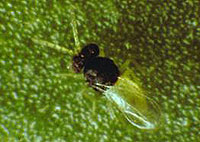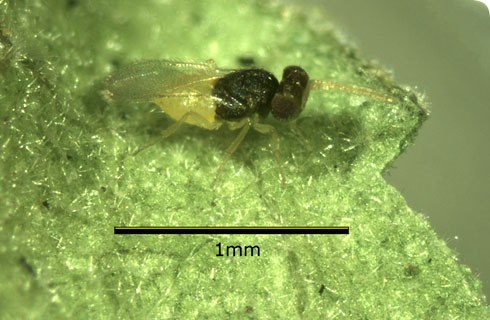Encarsia formosa
Encarsia formosa was first described by A B Gahan (1924) from a greenhouse population in Idaho, USA.
The name formosa means ‘beautiful’ in Latin - and in this case has nothing to do with the former name of the island of Taiwan.
Encarsia formosa is dependent on the whitefly to lay its eggs, and for food, killing it in the process. It parasitizes 16 different species of whitefly in different parts of the world.
Each adult wasp can kill around 100 whitefly nymphs in its lifetime.
Species detail

This parasitoid wasp belongs to a species group (the luteola-group) distinguished by, among other characters, the 4-segmented mid tarsi.
We know E. formosa was originally a new world species, but it may have originated in North, Central or South America.
-

Taxonomy
Find out how you can recognise E. formosa.
-

Distribution
This wasp can be found in greenhouses almost anywhere, and is deployed as a highly effective bio-control agent.
-

Biology
Adult E. formosa seek out their whitefly hosts and lay their eggs in the nymphs. The wasp can kill about a hundred whiteflies in its 12 day lifetime. Find out just how it does it.
-

References
More information about E. formosa.
About the author
Toolbox
Glossary
Haemolymph
Fluid in the circulatory system of arthropods.
Olfactory
Sensory system for sense of smell.
Oviposition
Laying eggs using an organ called an ovipositor.
Thelytokous
Process by which female offspring are produced from unfertilised eggs.
Parasitoid
Depends on another species for survival, and kills it in the process.

